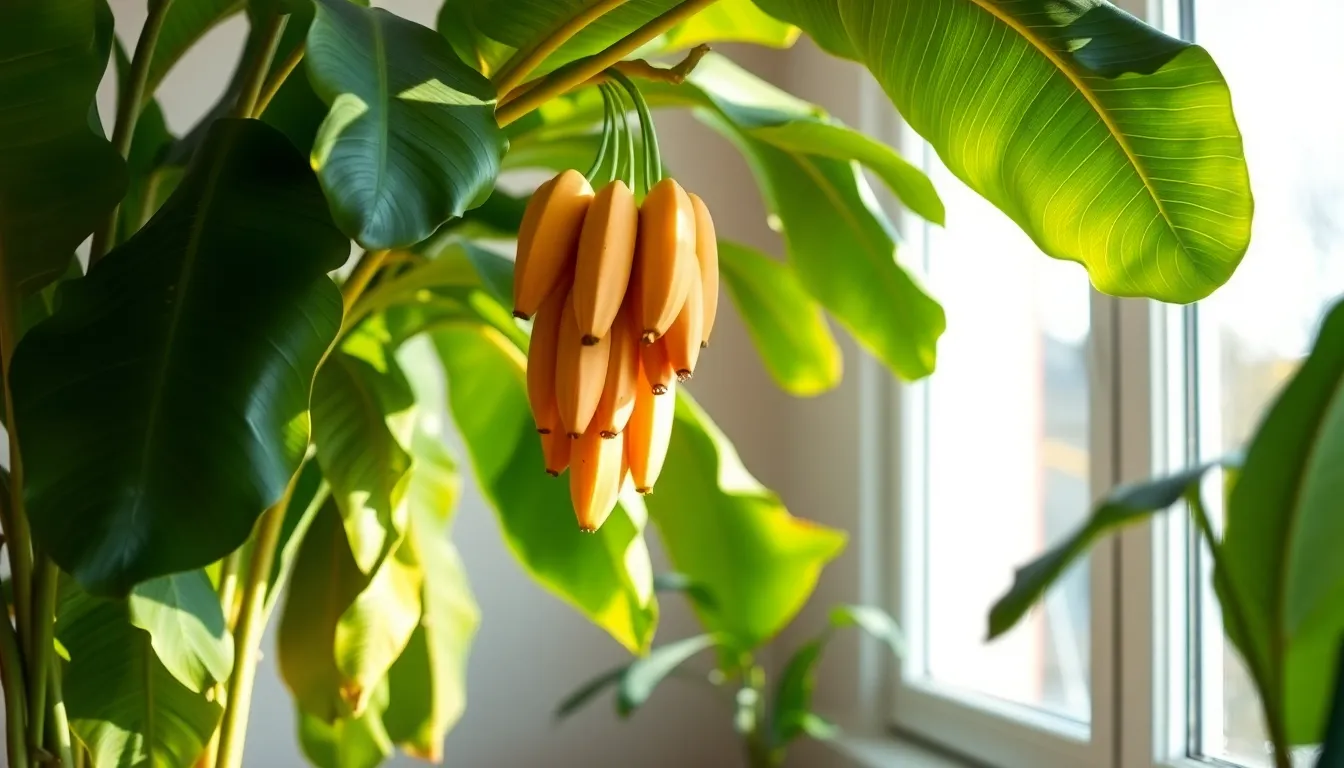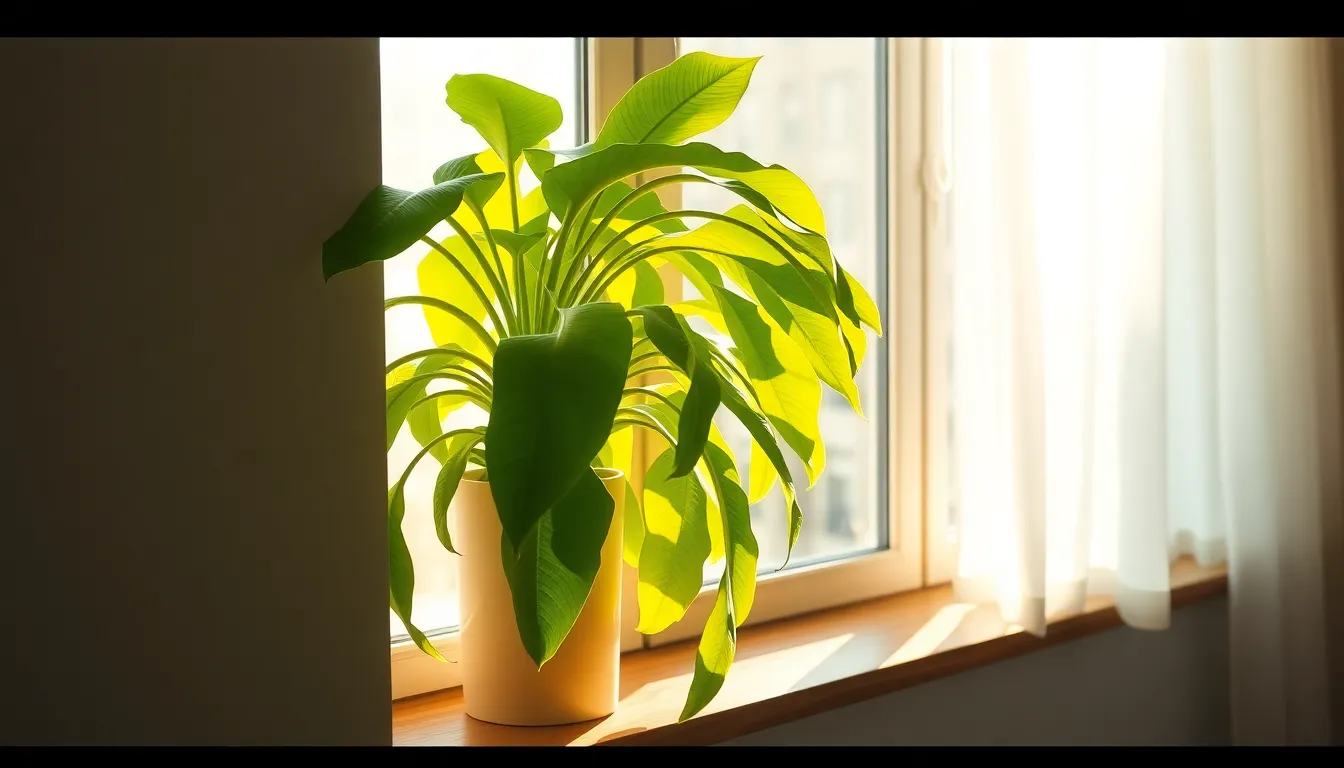If you’ve ever wanted a plant that’s as quirky as it is charming, the string of bananas is your go-to green buddy. With its cascading, banana-shaped leaves, this succulent not only brings a splash of whimsy to any space but also thrives with surprisingly little fuss. It’s like having a pet that doesn’t need walking, feeding, or the occasional existential crisis.
String of Bananas Plant Care
String of bananas, scientifically known as Senecio radicans, features elongated, banana-shaped leaves that drape elegantly. This succulent thrives in bright but indirect sunlight, making it suitable for homes and office spaces with adequate light. Potting mix should include well-draining components to avoid root rot, so using a cactus soil or a mixture of perlite and potting soil works well.
Watering is an essential part of its care routine. The general rule states to allow the top inch of soil to dry out before watering again. During the growing season, this plant benefits from bi-weekly watering, while in the winter, watering frequency should decrease. Proper drainage is vital; suitable pots include those with drainage holes to prevent excess moisture.
Fertilizing contributes to healthy growth. A balanced, diluted fertilizer applied every 4-6 weeks during the growing season promotes lush foliage. Humidity prefers low levels; therefore, String of bananas does not require additional humidity.
Pest management can pose challenges. Common pests include mealybugs and spider mites, both of which can be controlled through insecticidal soap or neem oil. Signs of stress may show through wilting leaves or discoloration, indicating that adjustments in care are necessary.
Propagation offers a straightforward way to expand a collection. Stem cuttings root easily when placed in well-draining soil, promoting new growth. With its vibrant leaves and cascading nature, the String of bananas serves as a fascinating addition to any plant enthusiast’s repertoire.
Optimal Growing Conditions

String of bananas thrives in specific conditions that enhance its growth and vibrancy. Providing appropriate light and temperature significantly impacts plant health.
Light Requirements
Bright, indirect sunlight promotes robust growth for the string of bananas. Placing the plant near a south or west-facing window delivers optimal lighting conditions. Direct sunlight might scorch leaves, leading to damage. Ensuring a balance between brightness and shade supports healthy development of the cascading leaves. Regular monitoring of light exposure helps prevent any stress caused by inadequate lighting. Artificial light can supplement natural light during short winter days. Adapting light levels as seasons change allows the plant to flourish throughout the year.
Temperature Preferences
Maintaining a temperature range of 65 to 75 degrees Fahrenheit is ideal for the string of bananas. It enjoys a warm environment and prefers to avoid drafts and cold air. Nighttime temperatures can drop slightly but should remain above 50 degrees Fahrenheit. Protecting the plant from sudden temperature fluctuations ensures it remains healthy. Placing the plant away from heating vents and open windows helps maintain its preferred climate. During the winter months, slightly raising the temperature supports continued growth.
Watering Guidelines
String of bananas thrives with proper watering practices. Understanding when and how to water is essential for its health.
Frequency of Watering
Watering happens when the top inch of soil feels dry. During the growing season, bi-weekly watering suits the plant well. In winter, reduce watering frequency to every three to four weeks. Excess moisture leads to root rot, so checking soil moisture often is crucial. If the environment is particularly dry, slight adjustments to the schedule may occur. Consistency in watering habits promotes a healthier plant.
Signs of Overwatering and Underwatering
Recognizing signs of stress helps maintain the string of bananas plant. Overwatering often leads to yellowing leaves and mushy stems. Conversely, underwatering causes leaves to wrinkle and may lead to dropping. Monitoring the plant closely ensures timely interventions. Checking for both conditions contributes to a thriving plant. Adjustments can prevent further damage and encourage growth.
Soil and Fertilization
The string of bananas thrives best in specific soil conditions. A well-draining potting mix is crucial for its health.
Best Soil Types
Succulent and cactus soil works well for the string of bananas. This type of soil allows for adequate drainage while providing necessary nutrients. Additionally, amendments like perlite or coarse sand can enhance drainage further. Using a mixture that retains some moisture helps the plant thrive without risking root rot. A pH range of 6 to 7 is optimal.
Fertilization Schedule
Routine fertilization supports healthy growth during the active season. Applying a balanced, water-soluble fertilizer every 4 to 6 weeks promotes development. Spring and summer are the ideal times for fertilizing, while reducing frequency during fall and winter maintains proper nutrient levels. Diluting the fertilizer to half-strength ensures the plant receives adequate nutrients without overwhelming it. Keeping track of the plant’s growth can guide more tailored fertilization practices.
Common Pests and Diseases
String of bananas plants can face several pests and diseases that affect their health. Awareness of these issues leads to timely interventions, promoting a thriving plant.
Identification and Treatment
Mealybugs and spider mites frequently target string of bananas. Signs of mealybugs include cottony white masses on leaves, while spider mites appear as tiny webbing on stems. Treatments involve using insecticidal soap or neem oil to eliminate these pests. Regular inspections help catch infestations early. For diseases like root rot, indicated by wilting or yellow leaves, reducing watering can aid recovery. Ensuring pots have good drainage can prevent root issues.
Prevention Tips
Preventing pests and diseases relies on maintaining optimal conditions. Placement in bright but indirect light fosters plant strength. Using well-draining soil eliminates excess moisture buildup. Regularly cleaning leaves removes dust and potential pests. Consistent monitoring allows she to catch any problems before they escalate. Implementing these strategies contributes to a healthier string of bananas plant.
Conclusion
Caring for a string of bananas plant can be a rewarding experience for any plant enthusiast. With its unique appearance and minimal maintenance needs, it adds charm to any space. By providing the right light conditions and following proper watering practices, this succulent can thrive year-round.
Regular monitoring for pests and adjusting care based on environmental changes ensures the plant remains healthy. Whether it’s through propagation or simply enjoying its beauty, the string of bananas is a delightful addition to any collection. With a little attention and care, it can flourish and bring joy for years to come.





